The idea of 'a barren emptiness' (void) has been visualized also by Ga5-3:
... The ancient Chinese believed that with
the arrival of the dry season the earth and sky ceased to
communicate ... The Spirit of drought
was personified by a little bald woman.with
eyes at the top of her head. While she was present, the sky
refrained from sending rain, so as not to harm her ... Hills and
rivers are the first to suffer from drought. It deprives hills
of their trees, i.e. their hair, and rivers of their fish, which
are their people ... The same word, wang, means mad,
deceitful, lame, hunchbacked, bald and Spirit of drought ...
|
 |
16 |
 |
147 |
 |
|
Ga4-13 (96) |
Ga5-3 (113) |
Gb2-6 (32) |
|
*160 |
*177 |
*325 |
Perhaps we should understand from Ga4-13 at JUNE 25 (5
days before SIRIUS) that there should be another dry 5-day period
beginning with Ga5-3 before the arrival of sweet water (vai):
|
 |
|
vai |

|
HELIACAL DATES: |
|
JUNE 25 (181 - 5) |
26 (177
= 6 * 29½) |
27 |
28 |
29
(180 = 80 + 100) |
30
(*101) |
|
 |
 |
 |
 |
 |
 |
|
Ga4-13 →
14 * 29½ |
Ga4-14
(97) |
Ga4-15 |
4 * 29 +
360 = 416 |
Ga4-17
(100) |
SIRIUS |
|
NAKSHATRA DATES: |
|
 |
 |
 |
 |
 |
 |
|
Ga5-3 |
Ga5-4 (97 + 17) |
Ga5-5 |
Ga5-6
(84 + 32 = 116) |
Ga5-7 |
SIRRAH |
|
JAN
11 |
12 (377
= 177 + 200) |
13 |
14 |
380 (= 8
* 29 + 148) |
16
(*301) |
Vai.Water, liquid,
juice. 1. Vai tagata, semen, sperm (also: takatea).
2. Vai kava, saltwater, sea, ocean. Vanaga. (Sweet)
water. Vai-kura =
blood. Barthel. 1. Water, liquid, fluid, sap, juice, gravy,
fresh water as differing from tai seawater; hakavai
to dissolve, to liquefy, to melt. P Pau.:
ana-vai, a brook.
Mgv.: vai, water.
Mq.: vai, water,
liquid, juice. Ta.: vai,
sweet water, sap, juice. Vaihu
(vai-u), milk. T Mq.,
Ta.: vaiu, milk.
Vaipuga (vai-puna),
spring water. P Mgv.: vaipuna,
water which springs from among stones. Mq.:
vaipuna, spring
water. Ta.: vaipuna,
a spring. Vaitahe (vai-tahe
1), river. 2. Pau.: Vai,
to exist. Ta.: vai,
to be, to exist. Vaiora,
to survive. Sa.: vaiola,
the spring 'water of life?' Ma.:
waiora, water of life.
Vaitoa (vai-toa
2), sugar. Mgv.: vaito,
id. Vaituru (vai-turu
1), water conduit. Vaivai,
weak. PS Mq.: vaivai,
soft, pleasant, agreeable. Sa., To.:
vaivai, weak. Pau.:
Vaiho, to set down,
to place. Ta.: vaiiho,
to place. Ma.: waiho,
to set down. Pau.: Hakavaivai,
to delay. Ta.: vaivai,
to rest a bit. Ta.: Vaianu,
a plant. Mq.: Vaimata,
tears. Ha.: waimaka,
id. Vaitahe, a flood.
Sa.: vaitafe, a
river. Ha.: waikahe,
running water, flood. Vaitupu,
spring water. To.: vaitubu,
well water. Unuvai, to drink water; hipu unuvai,
drinking glass. Churchill. Sa., Fakaafo, To., Fu., Niuē,
Uvea, Nukuoro, Ta., Rar., Tongareva, Mq., Mgv., Fotuna, Nuguria,
Vaté: vai, water. Rapanui: vai, juice, liquid,
water. Aniwa: vai, tavai, water. Ma., Ha.: wai,
id. Sikayana: wai, wuai, id. Vi.: wai,
water. Rotumā: vai, voi, id. Churchill 2.
Vairua. 1. Good
fortune, good luck. O te vairua i rava'a-mai-ai-i tooku kahu,
by a piece of good fortune I got myself some clothes. 2.
Misfortune, bad luck; he uga koe e te maga i te vairua-á,
you have been unlucky; o piría te vairua, so that no
misfortune may happen to you. (Both expressions are ancient and
almost unknown today.) Vanaga. Ta.: vairua, vaerua,
verua, virua, vaiite, spirit, soul. Ma.:
wairua, id. Churchill.
Vaitara, winter west wind T. Churchill.
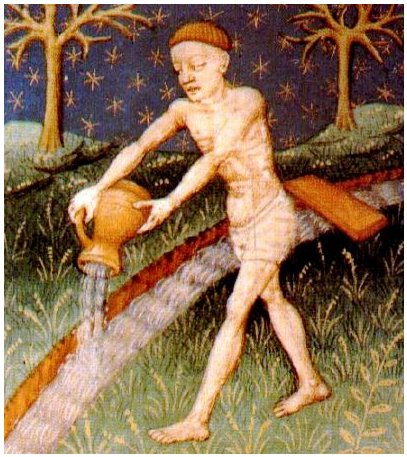
By the rule of balance we should then look also at the glyph
coming 17
(= 377 - 360) right ascension days after Gb2-6:
|
CLOSE TO THE SUN: |
|
DEC 7 |
8 |
9 |
10 |
11 (345) |
12
(*266) |
 |
 |
 |
 |
 |
 |
|
Gb2-6
(32) |
Gb2-7 |
Gb2-8 |
Gb2-9 |
Gb2-10
(82 + 183) |
Gb2-11 (266) |
|
BUNDA (Foundation) / KAKKAB
NAMMAΧ (Star of Mighty Destiny) |
θ Piscis
Austrini (330.1), λ Octantis (330.7) |
|
Al Sa'd al Su'ud-22 (Luckiest of the Lucky) /
Emptiness-11 (Rat)
TSIN =
36 Capricorni
(325.2),
ALPHIRK (The Flock) = β Cephei
(325.7),
SADALSUD
=
β
Aquarii,
ξ
Gruis (325.9) |
no star listed (326) |
CASTRA
= ε Capricorni
(327.2),
BUNDA
= ξ Aquarii
(327.5)
SIRIUS (α Canis Majoris)
|
Mahar sha hi-na Shahū-26 (Western One in the Tail of
the Goat)
NASHIRA
=
γ
Capricorni
(328.0),
ν
Oct. (328.3), AZELFAFAGE
= π¹ Cygni,
κ
Capricorni (328.7 |
Arkat sha hi-na Shahū-27 (Eastern One in the Tail of
the Goat)
ENIF
(The Nose) = ε Pegasi, ERAKIS = μ Cephei
(329.2),
46 CAPRICORNI,
JIH
(the Sun) =
κ
Pegasi
(329.3),
ι
Piscis Austrini (329.4),
λ
Capricorni (329.6),
ν
Cephei (329.7),
DENEB ALGIEDI
=
δ
Capricorni
(329.8)
*288.0 = *329.4 - *41.4 |

... In China,
with Capricornus, Pisces, and a part of Sagittarius,
it [Aquarius] constituted the early Serpent, or
Turtle, Tien Yuen; and later was known as
Hiuen Ying, the Dark Warrior and Hero, or Darkly
Flourishing One, the Hiuen Wu, or Hiuen
Heaou, of the Han dynasty, which Dupuis gave as
Hiven Mao. It was a symbol of the emperor
Tchoun Hin, in whose reign was a great deluge;
but after the Jesuits came in it became Paou Ping,
the Precious Vase. It contained three of the sieu,
and headed the list of zodiac signs as the Rat,
which in the far East was the ideograph for 'water',
and still so remains in the almanacs of Central
Asia, Cochin China, and Japan ... |
|
Febr 9 (40) |
10 |
11 |
12 (408) |
13
(*329) |
All Hearts' Day |
|
°Febr 5 (36) |
6 |
7 |
8 (*324) |
9 |
10 (41) |
|
'Jan 13 (378) |
14 |
15
(*300) |
16 |
17 |
18 (383) |
|
"Dec 30 (364)
|
Ko Koró
(→ kórē) 31 |
"Jan 1 |
2 |
3 |
4 |
|
... On February 9 the Chorti Ah K'in,
'diviners', begin the agricultural year. Both the
260-day cycle and the solar year are used in setting
dates for religious and agricultural ceremonies,
especially when those rituals fall at the same time
in both calendars. The ceremony begins when the
diviners go to a sacred spring where they choose
five stones with the proper shape and color. These
stones will mark the five positions of the sacred
cosmogram created by the ritual. When the stones are
brought back to the ceremonial house, two diviners
start the ritual by placing the stones on a table in
a careful pattern that reproduces the schematic of
the universe. At the same time, helpers under the
table replace last year's diagram with the new one.
They believe that by placing the cosmic diagram
under the base of God at the center of the world
they demonstrate that God dominates the universe.
The priests place the stones in a very particular
order. First the stone that corresponds to the sun
in the eastern, sunrise position of summer solstice
is set down; then the stone corresponding to the
western, sunset position of the same solstice. This
is followed by stones representing the western,
sunset position of the winter solstice, then its
eastern, sunrise position. Together these four
stones form a square. They sit at the four corners
of the square just as we saw in the Creation story
from the Classic period and in the Popol Vuh.
Finally, the center stone is placed to form the
ancient five-point sign modern researchers called
the quincunx ...


... In the
inscriptions of Dendera, published by Dümichen, the
goddess Hathor is called 'lady of every joy'.
For once, Dümichen adds: Literally ... 'the lady of
every heart circuit'. This is not to say that the
Egyptians had discovered the circulation of the
blood. But the determinative sign for 'heart' often
figures as the plumb bob at the end of a plumb line
coming from a well-known astronomical or surveying
device, the merkhet. Evidently, 'heart' is
something very specific, as it were the 'center of
gravity' ...
See Aeg.Wb. 2, pp. 55f.
for sign of the heart (ib) as expressing
generally 'the middle, the center'.
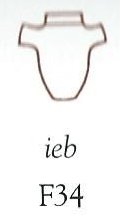
And this may lead
in quite another direction. The Arabs preserved a
name for Canopus - besides calling the star Kalb
at-tai-man ('heart of the south') ... Suhail
el-wezn, 'Canopus Ponderosus', the
heavy-weighing Canopus, a name promptly declared
meaningless by the experts, but which could well
have belonged to an archaic system in which Canopus
was the weight at the end
of the plumb line, as befitted its important
position as a heavy star at the South Pole of the
'waters below'. Here is a chain of inferences which
might or might not be valid, but it is allowable to
test it, and no inference at all would come from the
'lady of every joy'. The line seems to state that
Hathor (= Hat Hor, 'House of
Horus') 'rules' the revolution of a specific
celestial body - whether or not Canopus is alluded
to - or, if we can trust the translation 'every',
the revolution of all celestial bodies. As concerns
the identity of the ruling lady, the greater
possibility speaks for Sirius, but Venus cannot be
excluded; in Mexico, too, Venus is called 'heart of
the earth'. The reader is invited to imagine for
himself what many thousands of such pseudo-primitive
or poetic interpretations must lead to: a disfigured
interpretation of Egyptian intellectual life ... |
|
CLOSE TO THE FULL
MOON: |
|
JUNE
7 |
8
(*79) |
9 |
10 (161) |
11 |
12 |
|
The Knot (Ukdah) |
Rishu A.-13 (Head of the Lion)
ψ Leonis (146.4),
RAS ELASET AUSTRALIS
= ε Leonis
(146.6)
*105.0 = *146.4 - *41.4 |
VATHORZ
PRIOR
= υ Carinae
(147.9) |
|
Star-25 (Horse) /
ANA-HEU-HEU-PO-5 (Pillar where debates were held)
ALPHARD
(The Horse)
=
α
Hydrae
(142.3),
ω
Leonis (142.6),
τ¹
Hydrae (142.7) |
Al Tarf-7 (The End)
ψ
Velorum (143.3),
ALTERF
=
λ
Leonis,
τ²
Hydrae (143.4),
ξ
Leonis (143.5)
*102.0 = *143.4 - *41.4 |
A Hydrae
(144.1)
VEGA (α
Lyrae)
|
UKDAH
(Knot) = ι Hydrae
(145.4), κ Hydrae (145.5),
SUBRA = ο Leonis
(145.8)
*104.0 = *145.4 - *41.4 (= *288 - *184) |

... For they say
that the course of human life resembles the letter
Y, because every one of men, when he has reached the
threshold of early youth, and has arrived at the
place 'where the way divides itself into two parts',
is in doubt, and hesitates, and does not know to
which side he should rather turn himself ...
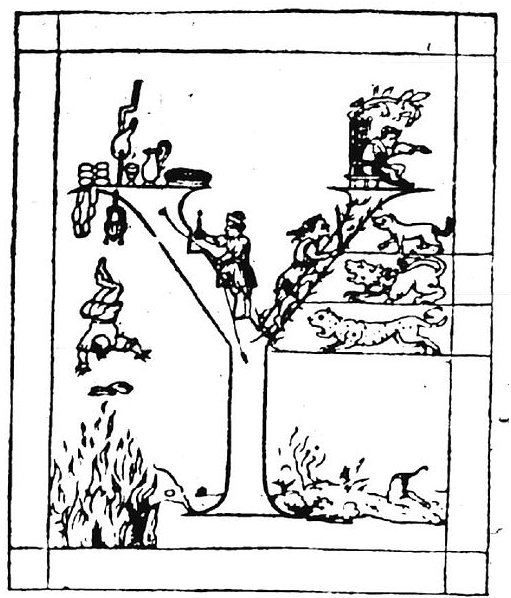
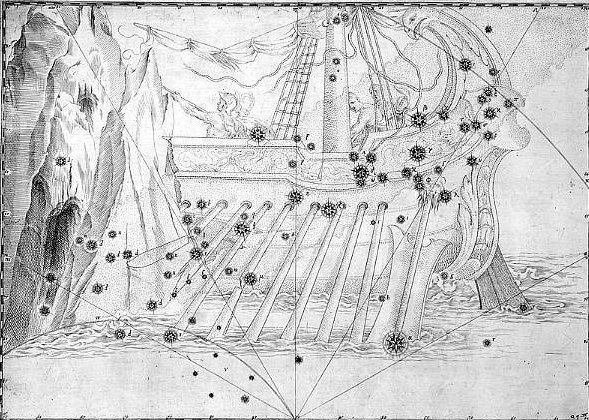 |
|
Aug 10 |
11 |
12 |
13
(*145) |
14 |
15 (227) |
|
°Aug 6 |
7 |
8 (220) |
9 |
10 |
11 (*143) |
|
'July 14 |
15 |
16 |
17 (*118) |
18 |
19 (200) |
|
SIRIUS |
"July 1 |
2 |
3
(*104) |
4 (185) |
Te Anakena 5 |
|
At the time of rongorongo Sirius
stood like a pillar at day zero in June 30, 181
(*101), and 101 days later came Spica in October 9,
282 (*202). The flag of Brazil has uplifted Spica
with a little dot far down marking Dramasa (σ
Octantis, the South Pole star). In between we can
perceive the Southern Cross, and between Spica and
the Southern Cross is the Tail of the Hydra (γ
Hydrae, Al Dhanab al Shuja) - in the day
before Spica but below the curved band. To the right
is the Scorpion with Antares placed at the opposite
side compared to Procyon (α
Canis Minoris), below O in ORDEM. Alphard (α
Hydrae) is below M. Sirius and 4 more stars in Canis
Major are noted below Alphard, together with
Canopus. In addition to 8 stars in the Scorpion we
can also see 3 more stars to the left which mark the
Southern Triangle (Triangulum Australe).
Altogether there are 26 + 1 = 27 stars:

... They stayed (there longer). On the fifth day of
the month of July (Anakena) [day 186 + 41 =
227], they all got up, went downhill, went on, and
reached Hanga Te Pau. They took their
provisions with them, carrying them on their
shoulders, went on, and reached Te Pou. They
made camp and slept in Te Pou on the tenth of
the month of July (Anakena). Then they all
got up, carried their provision on their shoulders,
went straight ahead, and followed the path of the
dream soul of Hau Maka. They came to Hua
Reva and said, This is Hua Reva A Hau Maka!... |
 |
 |
 |
 |
 |
 |
|
Ga3-19 |
Ga3-20
(79) |
Ga3-21 |
Ga3-22 |
Ga3-23 |
Ga3-24 |
|
 |
16 |
 |
147 |
 |
16 |
 |
|
Ga4-13 (96) |
Ga5-3 (113) |
Gb2-6 (32) |
Gb2-23 (7 * 7) |
|
*160 |
*177 |
*325 |
*342 (SITULA) |
|
*343 |
*360 |
*142 |
*159 |
|
366 / 2 |
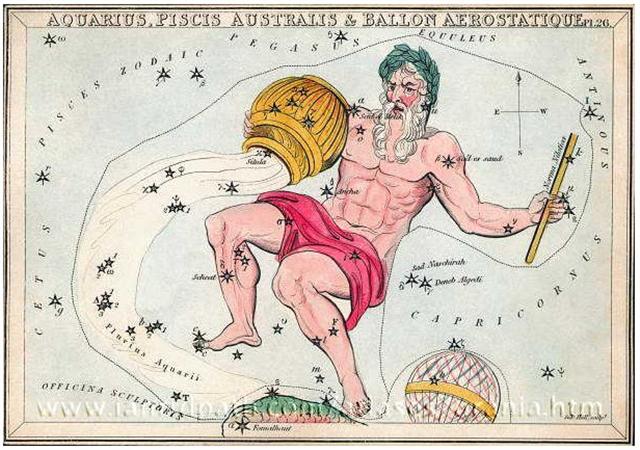
|

























